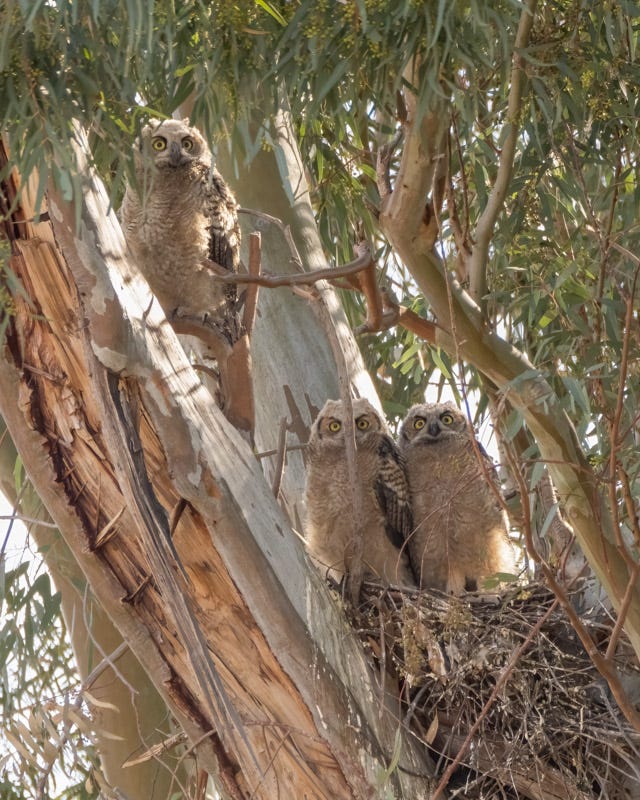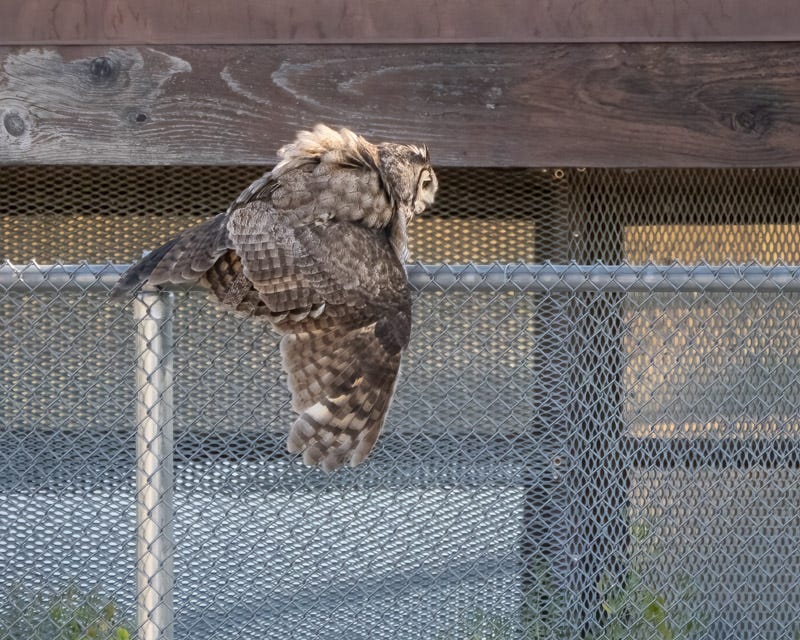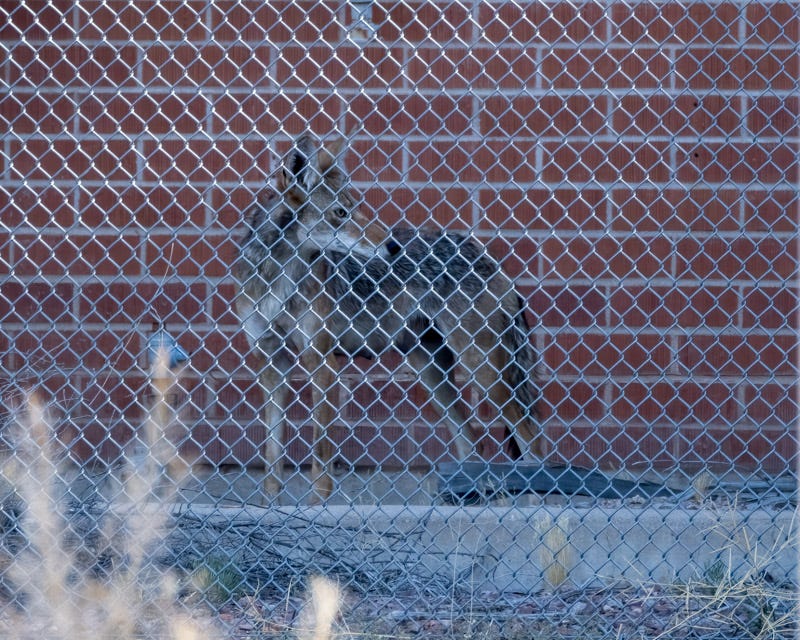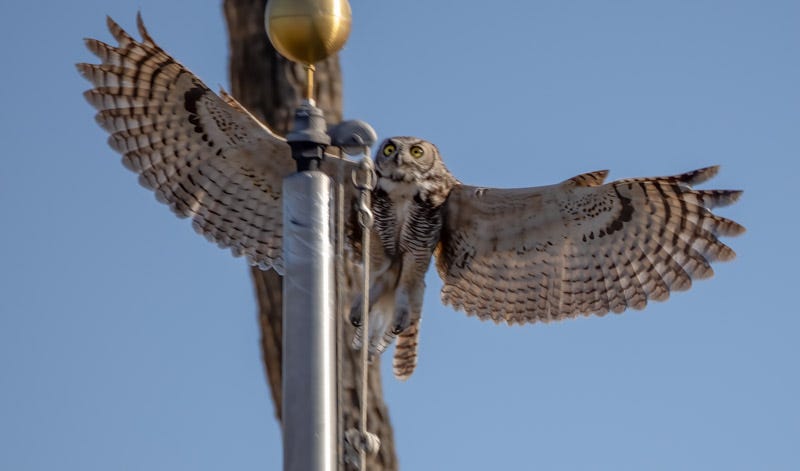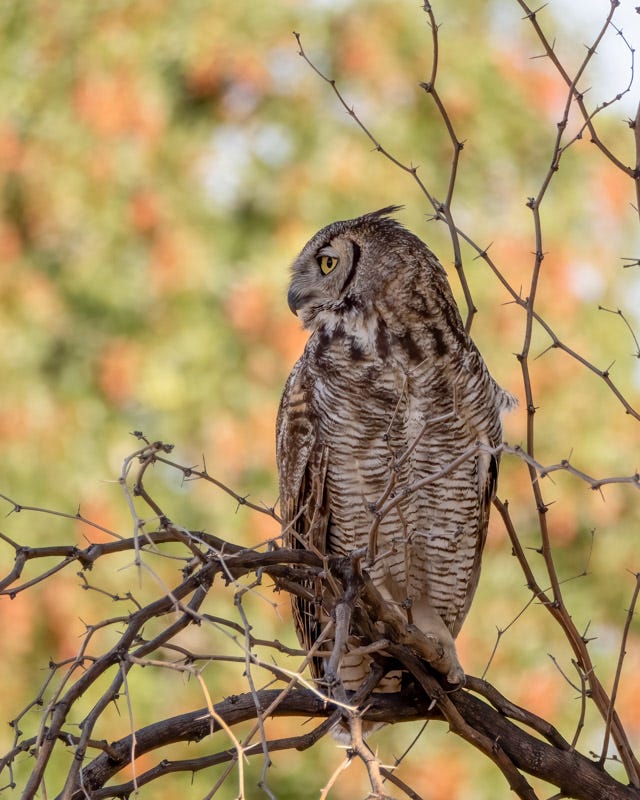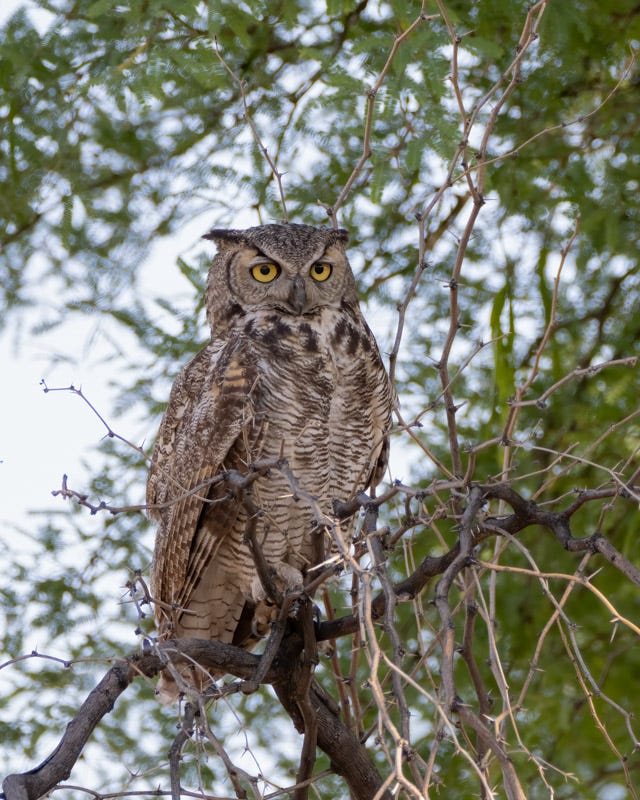Very Upset Owls
Great Horned Owls become very protective
I learned about and visited some owls in their nest on May 18th, a Saturday. The nest was located near Sweetwater Wetlands in a eucalyptus tree on the grounds of the old wastewater treatment facility. The three owlets looked ready to fledge.
I returned with another friend.three days later, on Tuesday, the 21st, The owls were no longer in their nest. They had fledged. We knew the young owls and their parents were likely in a nearby tree, and there are many old, large trees in that area. As we began to look around, an owl came flying around a building and landed crazily on the fencing in front of the building. It was clicking its beak while another owl flew around the same area.
The two owls were flying around excitedly. Suddenly, we saw the source of the activity. The owl that was straddling the fence was glaring down at two coyotes that were walking back and forth behind the fencing. The three young owls must have been somewhere nearby and the parent owls sensed extreme danger from the coyotes.
The adult owls flew back and forth to various spots and dove at the coyotes on and off. The owls were oblivious to our presence.
The coyotes wandered off but the owls remained wary, continuing to switch perches often while patrolling the area, guarding their territory and their young. The adult Great Horned Owls were alert and looking back and forth.
Needless to say, by perching in the open where they could watch out for the coyotes, the Great Horned Owls provided many opportunities for us to photograph the birds.
The photo above and the two below were all taken with the owl in the exact same spot. Note the branch she is perched on. Because the owl was watching out for the coyotes, it paid no attention to us. We were able to step to one side or another to 'change' the background. The different perspectives allowed for different photos.
The seconds seemed like long minutes to us.
The Great Horned Owl in these photos appears to be the female. Her brood patch is apparent (see that long vertical part in her breast feathers). She finally began to relax after many minutes. The other adult owl had already flown off and "disappeared" in a neighboring tree.
Finally, the owl seemed to let us know that the dangers had passed. She flew into a mesquite tree and blended into the foliage. No longer did she need to perch in the open where the coyotes would see her.
We never did locate the three young owls. We assumed they were safe, but it is a dangerous world for young great horned owls. The young will be taken care of by their parents for a half of a year or so while learning to hunt. If they reach adulthood, they should lead a long life. Great Horned Owls have no natural predators but human caused problems (rat poisons, traps, electrocution, etc.) do have a significant impact.


